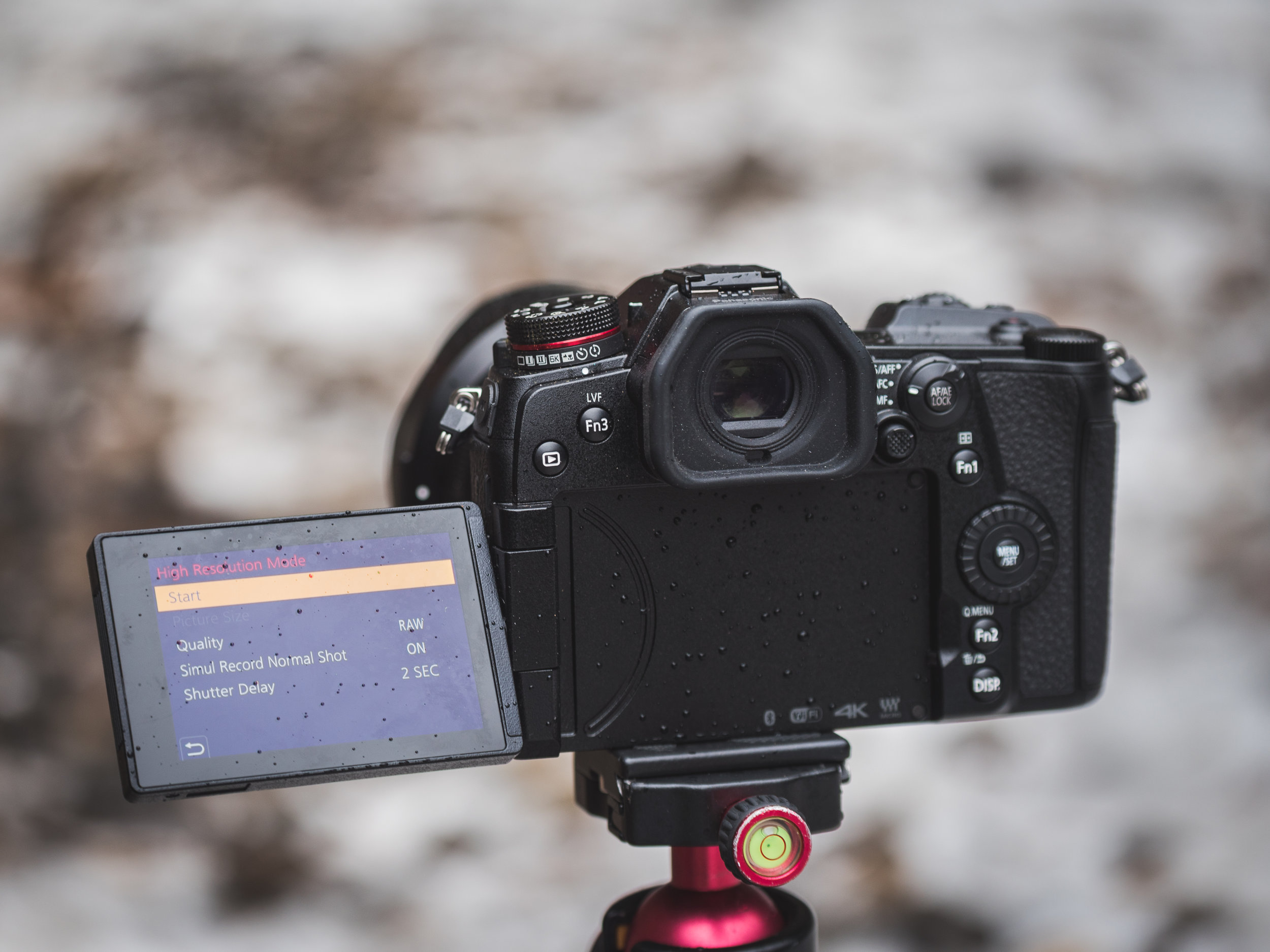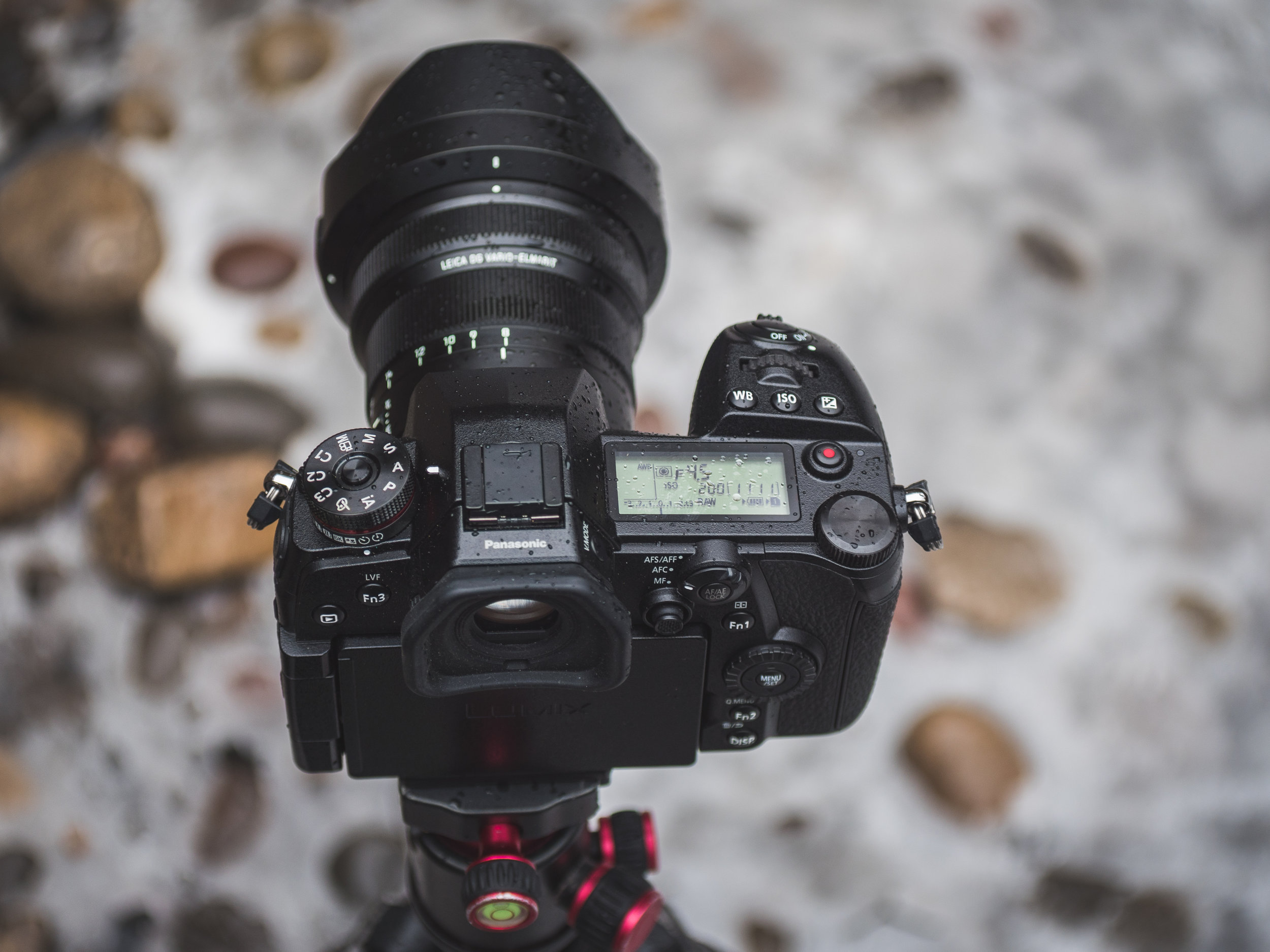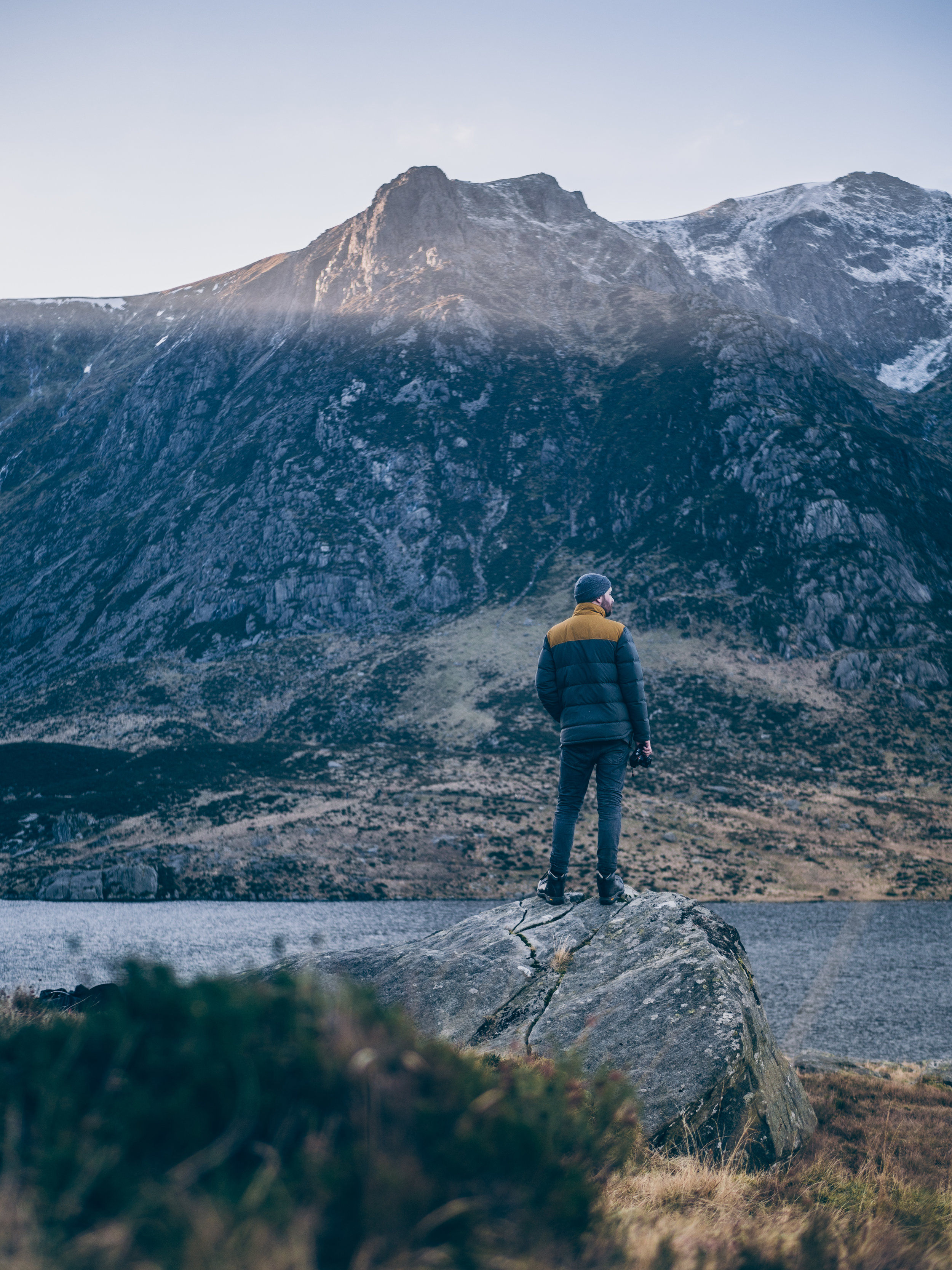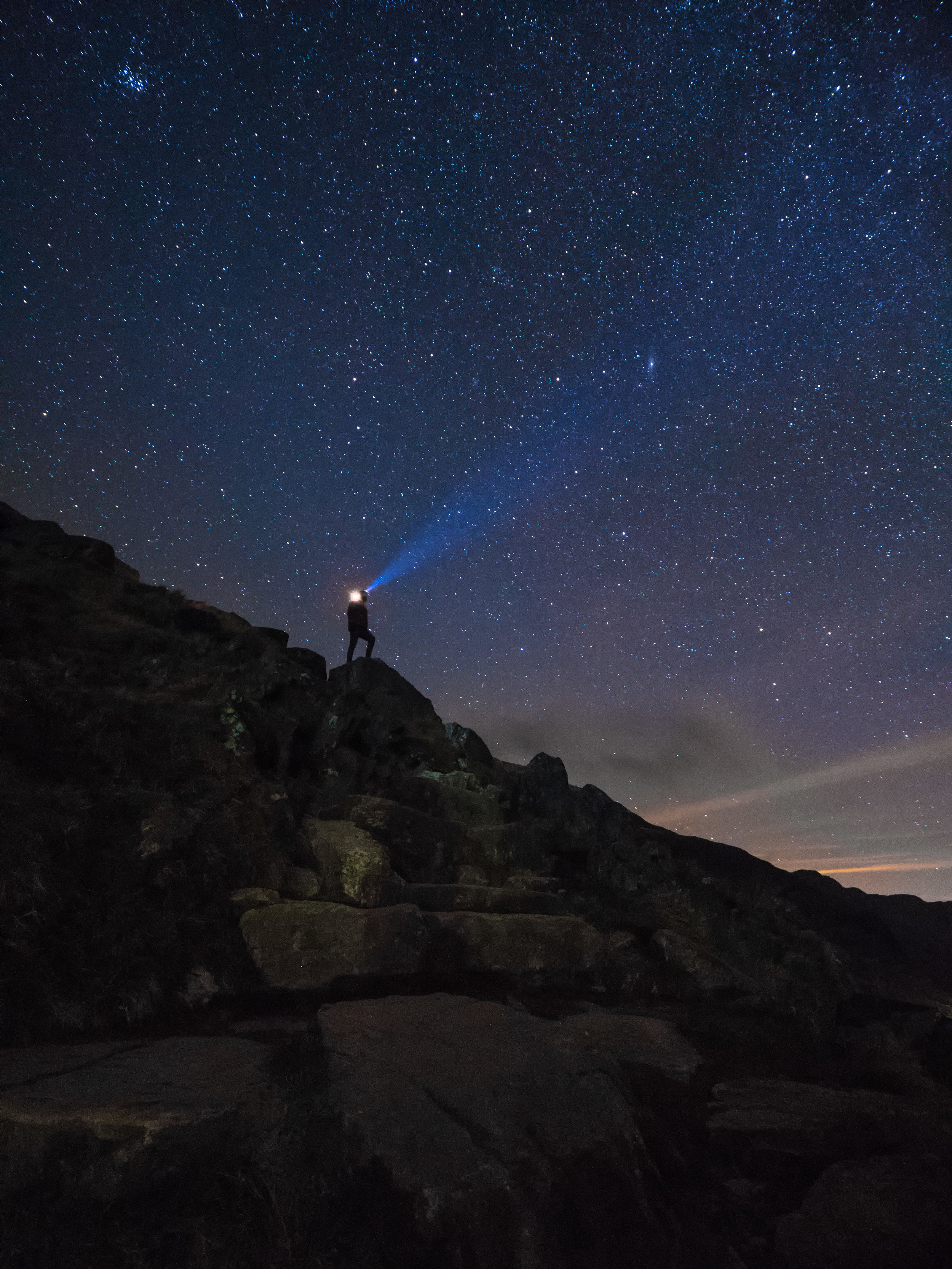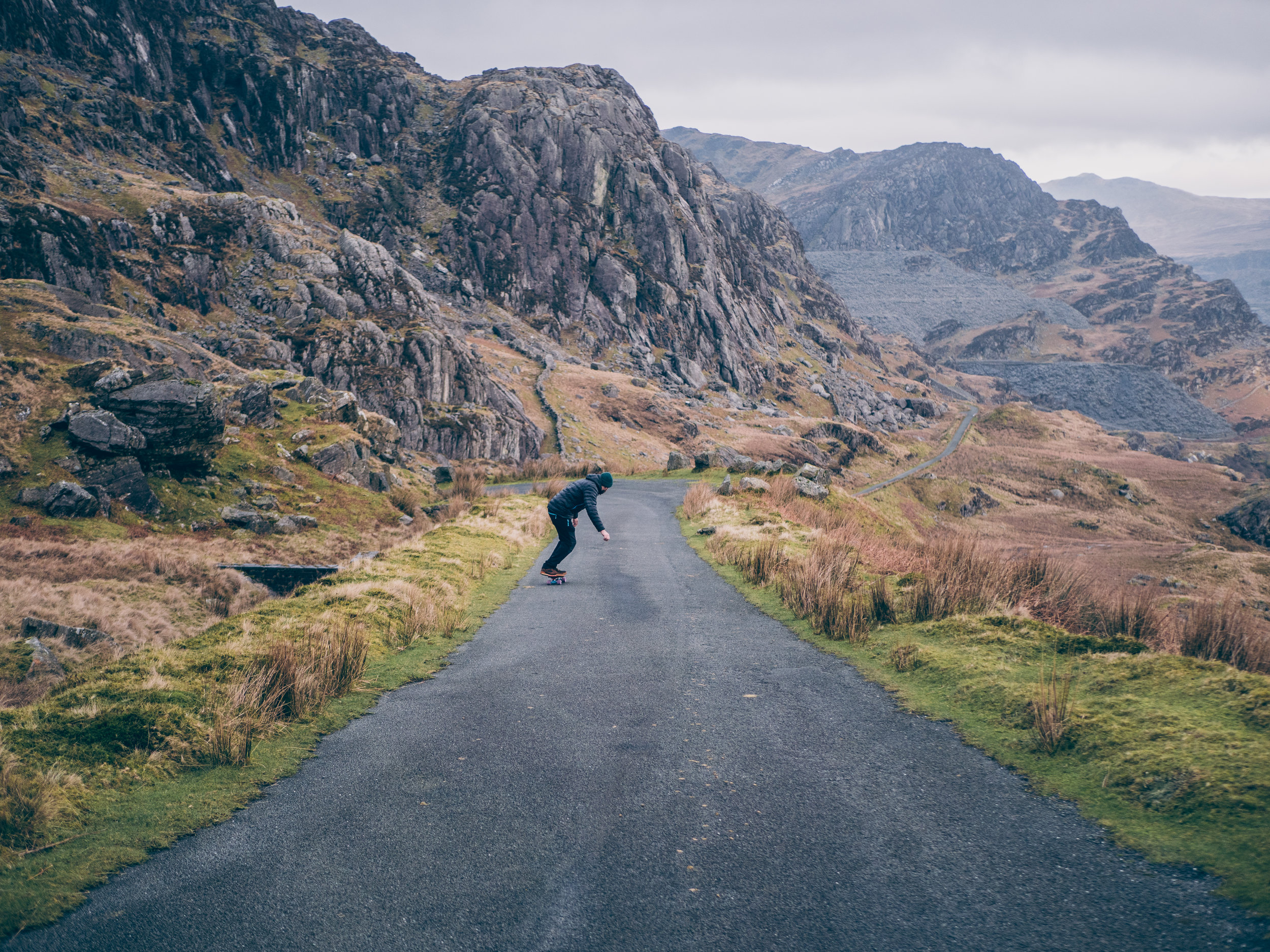The Lumix G9 with the Leica 8-18mm
Back in October last year Panasonic Lumix released the G9 one of the most exciting cameras of the year and one of the best micro four thirds cameras to date which would sit alongside the GH5 and the newly released GH5s as Panasonic's flagship lineup.
When I found out I was getting my hands on the G9 there was only one place to go, Snowdonia. A place that really stands out for me when shooting landscapes, harsh unpredictable weather, mountains, lakes and rivers. A proving ground for any camera!
It has the 20.3 megapixel sensor found in the GH5 with better noise reduction and image rendering due to some tinkering with the Venus engine, fully articulating touchscreen and a new bigger, brighter EVF, USB charging and High Resolution mode and an LCD top plate, a feature which I have not seen since the days of shooting with my DSLR. I love the new larger more aggressive Lumix logo and the redefined styling on the G9, it really does feel like Panasonic have looked at every detail!
Panasonic have released the G9 as a sports and wildlife camera and while it certainly looks like it would fit into these categories for me I really wanted to prove it's capabilities as a landscape camera and maybe convince the full frame shooters that it's time to look at what can be offered in a smaller, more compact system. Looking at what is offered in this camera it seems on paper the G9 can really do it all.
Using the High Resolution mode is quick and easy to set up.
The feature rich G9 is offering pro level specs that would be found in a top end full frame mirrorless cameras like the Sony A9 with 20fps continuous AF and a bigger brighter EVF with no blackout which is a very exciting and welcome addition. Not only that but now Panasonic have implemented sensor shift technology that can achieve 80 and 40 megapixel images both in RAW and JPEG by shifting the sensor inside the body using the built in IBIS. This is a stand out feature for me, to be able to capture that much detail from a small compact set up is amazing. Not only does the system offer top specs and features at half the weight of full frame cameras but now the system can offer greater image detail. The High Res mode works by taking 8 exposures whilst moving the sensor and then stitches the files internally within a few seconds. The longest shutter speed is limited to 1 second which for 90% of the time covers most scenarios but I do wonder if we may see a future update for longer exposures to be used.
The images using this feature really do have a medium format feel to them but also being able to crop in and see all the small detail and the files look amazing when editing on a big screen. For anyone shooting landscapes and architecture may find themselves using this feature a lot.
First light hitting Snowdon from Llynnau Mymbyr taken using the High Res mode G9 + 35-100mm 2.8
Moel Siabod in the hazy afternoon sun. Taken using the High Res mode. G9 + 35-100mm 2.8
I really like the new dedicated WB, ISO and Exposure Compensation buttons that are similar to the layout on the GH5. Also the new LCD top plate.
Panasonic claim that the G9 has 25% better dynamic range compared to the GH5, I haven't personally shot with the GH5 but I can say it's a great improvement over the GX8 and very noticeable when pulling the highlights and pushing the shadows. For most of my landscape work I always shot bracketed exposures as this really helps me get as much detail in the scene. A classic example is when shooting at sunrise and sunset. I was able to still bring out a lot of detail in this and I had under exposed this quite a lot but as you can see there is a lot of detail and colour in the shadows. This was also originally taken as a landscape then cropped to a portrait.
The Lone Tree at sunrise at LLyn Pardan G9 + 8-18mm + Gobe 10 stop ND
Reflections of Y Garn on the shores of Llyn Idwall G9 + 8-18mm + Gobe 6 stop ND Filter
The early morning light hitting the a boathouse on the shores of Llyn Dinas. G9 + 8-18mm
Taking in the views across Llyn Idwal. G9 + 25mm 1.7
The stunning view from above Llyn Idwal across to Pen yr Ole Wen. G9 + 8-18mm
Being in the dark skies of the Snowdonia national park and for my love of astrophotography I wanted to put the G9 to the test. Panasonic claims we should see a better reduction in noise at higher ISOs. Luckily I was blessed with a few clear cold nights perfect for some astrophotography. I was impressed with how much cleaner the files were, I kept to a maximum of ISO 3200 I found this to be the sweet spot to keep things clean but also giving me just enough to play with in post. I was able to bring out the shadows more than I could with my trusty GX8. The G9 also has Night Mode where you can select the EVF and LCD screen to change to a dim lit red screen to avoid causing to much light distraction at night and while this is a welcome feature I found myself using the normal mode and manually dimming the screen it's definitely a good option to change if you found yourself using the screen for timelapse or for shooting multiple exposures once you've set up your composition.
On the side of Snowdon looking up to the stars. G9 + 8-18mm ISO 3200 20 seconds.
The Orion Nebular can be clearly seen above some pine trees. G9 + 25mm 1.7 ISO 3200 10 seconds.
Skateboarding down Llyn Stwlan reservoir access road, testing the focus tracking on the G9 + 25mm 1.7
Conclusion
While this hasn't been the most technical review I hope I have given you an insight in how capable this camera is and how it performs in the rugged landscapes of Snowdonia. I really do think there has never been a better time to invest in this system, I have loved using the G9 for the last 3 months and while this has been a landscape focus review I'm looking forward to using the G9 for weddings and a few architectural commissioned shoots in the near future.
I have been blown away with how capable and usable the G9 is. The build quality and feel to this camera is the best to date, I was out in cold winter conditions with temperatures down to minus -4c and the G9 worked perfectly, shooting a full day only using half the battery was very impressive especially as I wasn't expecting the batteries to last long in these temperatures and with more than enough customisable buttons I can quickly switch between bracketing to High Res mode back to normal to suit my shooting needs.
Panasonic have clearly gone to a lot of thought and effort to decide what photographer's want in a camera and how it performs and feels in the hand. To be honest I was struggling to put the damn thing down! I'm looking forward to using the G9 as my work horse for many months to come.
If you have managed to read this far thanks again for stopping by and I look forward to sharing more experiences with the G9, Cheers.


